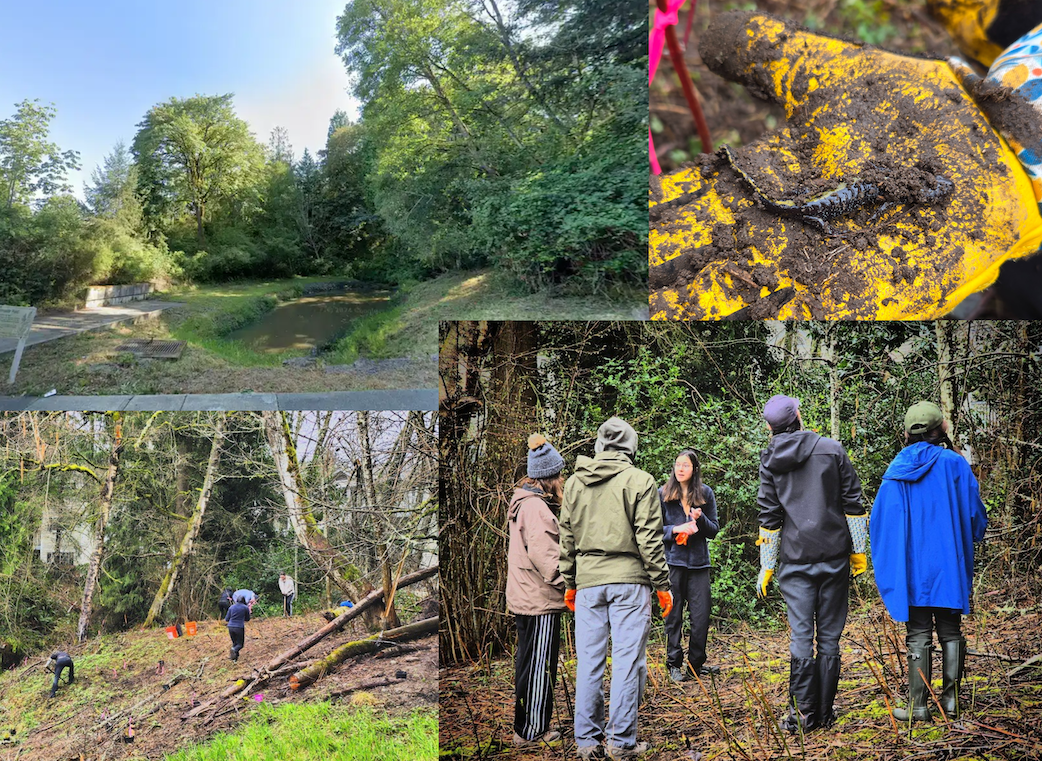Timeline
- Duration: March 2024 - ongoing
- Partners: City of Redmond, Department of Public Works
- Status: In-Progress
Overview
The Miller Creek Watershed Mapping project was a six-month collaborative effort to systematically document stream conditions, water quality, and habitat features across the entire 50-mile creek system. This work provides critical baseline data for future restoration planning and climate adaptation strategies.
Methodology
Survey Design
We established 120 permanent monitoring stations at half-mile intervals along the mainstem and major tributaries. Each station was assessed for:
- Water quality parameters (temperature, pH, dissolved oxygen, conductivity)
- Physical habitat characteristics (substrate composition, pool-riffle ratios, canopy cover)
- Biological indicators (macroinvertebrate communities, fish presence)
- Riparian vegetation structure and composition
Data Collection
Field teams conducted surveys during base flow conditions (July-August) using standardized protocols adapted from EPA's Rapid Bioassessment Protocols. All data were recorded using field tablets with GPS integration for spatial accuracy.
Key Findings
Water Quality
Overall water quality was good to excellent in the upper watershed, with degradation in the lower reaches due to agricultural and urban inputs. Notable findings:
- Average summer temperature: 14.2°C (upper) to 18.7°C (lower)
- Dissolved oxygen consistently above 8 mg/L in forested reaches
- Elevated conductivity in lower watershed (averaging 245 µS/cm)
Habitat Assessment
The watershed retains excellent habitat quality in protected forest lands, but faces challenges in working landscapes:
- High-quality habitat: 35% of surveyed reaches
- Moderate quality: 42% of reaches
- Impaired: 23% of reaches
Biological Communities
Macroinvertebrate assemblages indicated generally healthy conditions, with EPT (Ephemeroptera, Plecoptera, Trichoptera) taxa present in 78% of surveyed sites. Fish surveys documented populations of cutthroat trout, coho salmon, and sculpins in suitable habitats.
Restoration Priorities
Based on our findings, we identified priority areas for restoration:
- Upper Tributary Reconnection: Remove three small barriers to restore 8 miles of upstream habitat
- Riparian Buffer Enhancement: Establish native vegetation buffers along 12 miles of agricultural reaches
- Thermal Refuge Creation: Enhance groundwater-fed side channels for summer refugia
Data Accessibility
All survey data and spatial datasets are publicly available through the County GIS portal. Interactive maps allow community members to explore conditions throughout the watershed.
Next Steps
This baseline assessment sets the stage for ongoing monitoring and adaptive management. Annual follow-up surveys will track changes over time and help evaluate restoration effectiveness.
Project Team: Sarah Chen (Project Lead), Miguel Torres (Field Coordinator), 42 Community Volunteers
Funding: State Water Quality Grant, County Conservation District, Private Foundations
